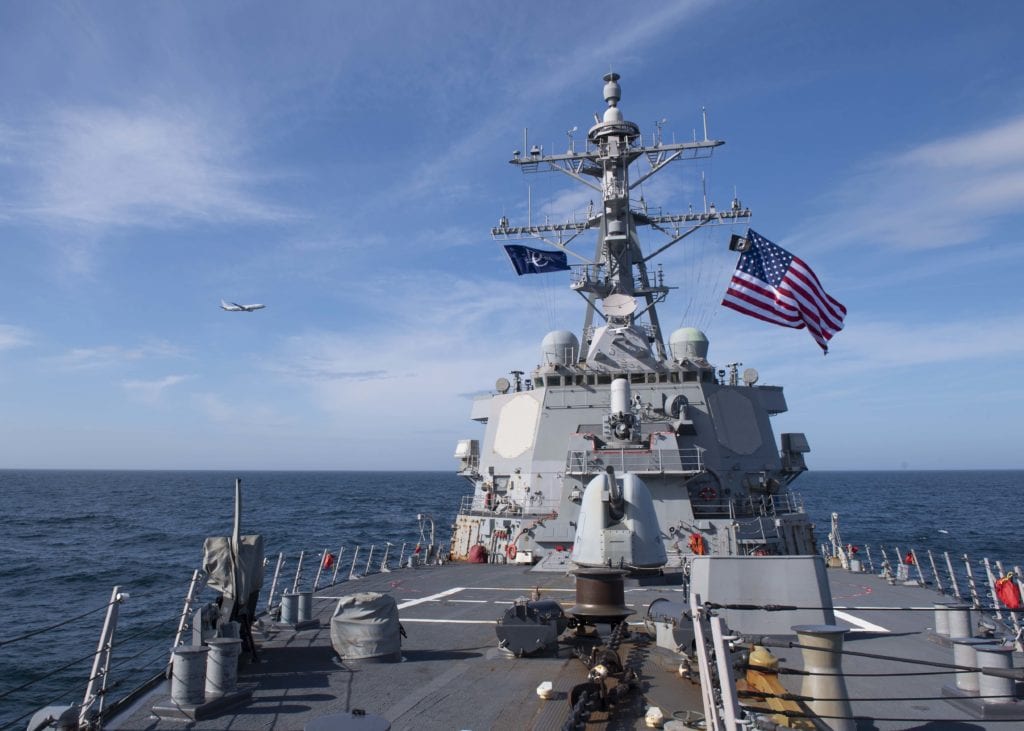
ARLINGTON, Va. — The Air Force general heading U.S. European Command says more Navy destroyers and Air Force strike fighters are what he needs to both deter and monitor Russia’s aggressive behavior from Arctic waters to the Black Sea.
“I see a concerted effort on behalf of Russia’s maritime forces in the Baltic, in the Barents and Black seas,” Gen. Tod Walters told a House Armed Services Committee April 15 during a hearing on national security challenges and U.S. military activities in Europe. Improving overall strategic indications and warnings (I&W), as well as command and control (C2), “starts with two destroyers to improve our ability to see undersea and it also culminates with F-35s.”
Wolters said he anticipated receiving the first set of U.S. F-35 Lightning II joint strike fighters in Britain this Fall. There are already 30 non-U.S. F-35s in Europe and the total number is expected to reach 450 jets by 2030. “And we’re programmed now with the United States Navy in the 2025 and 2026 timeframe to hopefully receive two additional destroyers,” he said.
There are four destroyers already based in Rota, Spain, which Wolters described as “the workhorses of deterrence,” projecting U.S. presence into the Mediterranean and Black seas and then back out again and up to the Arctic. Two more, also to be based in Rota, are required because of a consistent increase in Russian undersea activity in the Greenland-Iceland-United Kingdom gap. The historic maritime chokepoint in the 20th century is an access lane to the Atlantic Ocean for Arctic-based Russian subs. “The destroyers’ participation in undersea warfare, C2 and I&W is absolutely, positively critical,” Wolters said.
While the U.S. submarine fleet is “performing admirably,” Wolters said, command and control involves other assets like the Boeing P-8 Poseidon maritime patrol aircraft and destroyers.
“To comprehensively defend in this area, from undersea to all the way to 25,000 feet with a P-8, we need to make sure we have the right hardware and software, and we’re traversing in that direction,” Wolters said, adding. “It’s very challenging with respect to numbers.”
Asked by Virginia Republican Rep. Robert Wittman if he believed Russia’s seizure of Crimea in 2014 “gives them a strategic foothold in that area” and helps efforts to modernize the Black Sea fleet?” Wolders said “our vigilance is sky high” in the Barents and Baltic seas, as well as the Black Sea. “And every point that you alluded to with respect to potential intentions, we are preparing for, and planning for and expecting it occur.”
Laura Cooper, the deputy assistant secretary of defense for Russia, Ukraine, and Eurasia, who also testified at the hearing, said the Pentagon had increased its focus on the Black Sea. “And we’re taking an approach that looks holistically at all of our allies and partners in the region,” she said, adding, “We’ve started with efforts to build maritime domain awareness capacity” in Ukraine, Georgia, Bulgaria and Romania.
- Shall We Play a Game? Winning Isn’t the Point, Experts Say - April 5, 2023
- U.S. Goal: Maintaining Extended Presence in Arctic’s Harsh Environment - April 4, 2023
- Joint, Combined Exercise Shows Marine Littoral Regiment Idea is on ”Right Track’ - February 24, 2023






